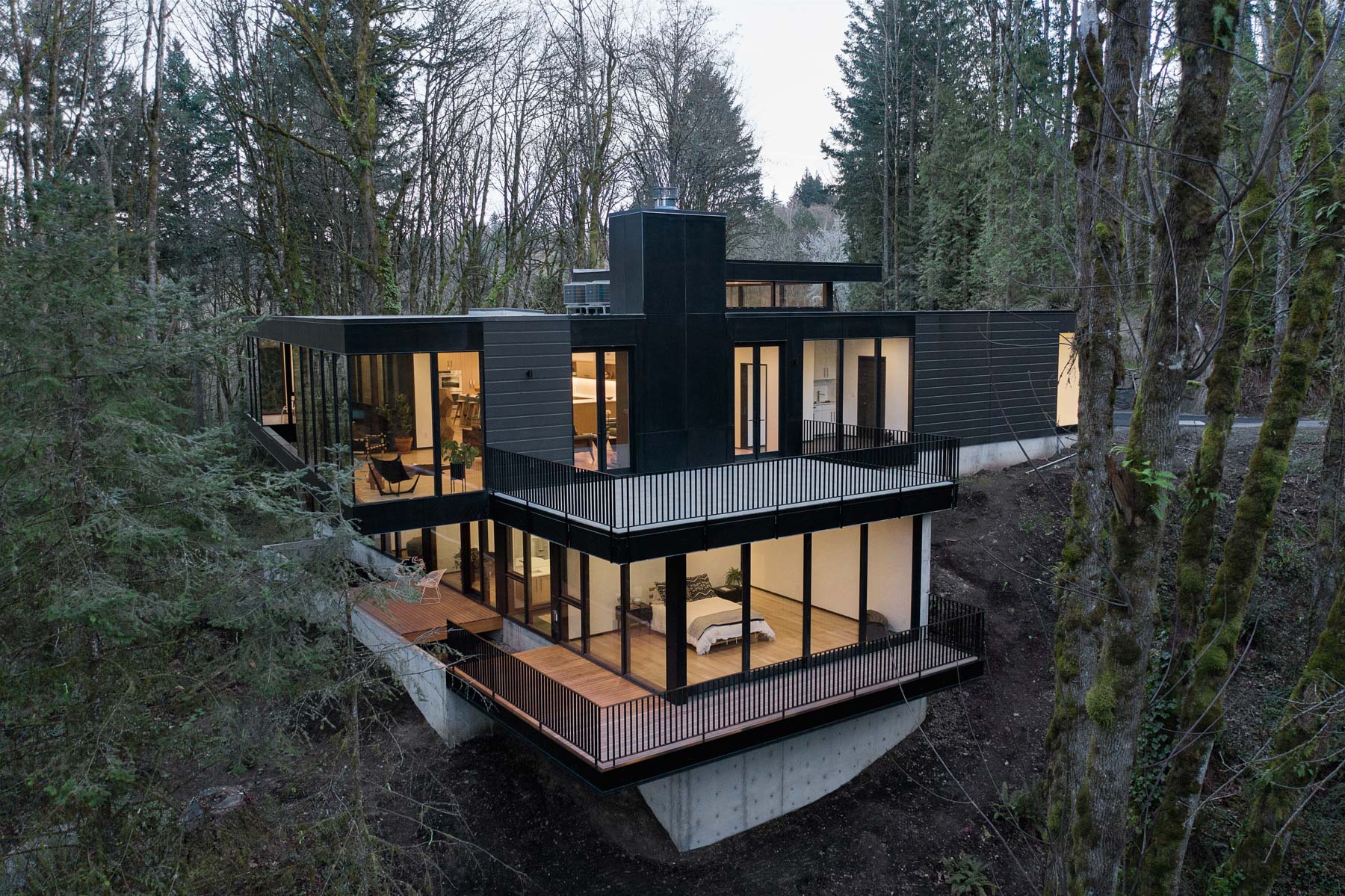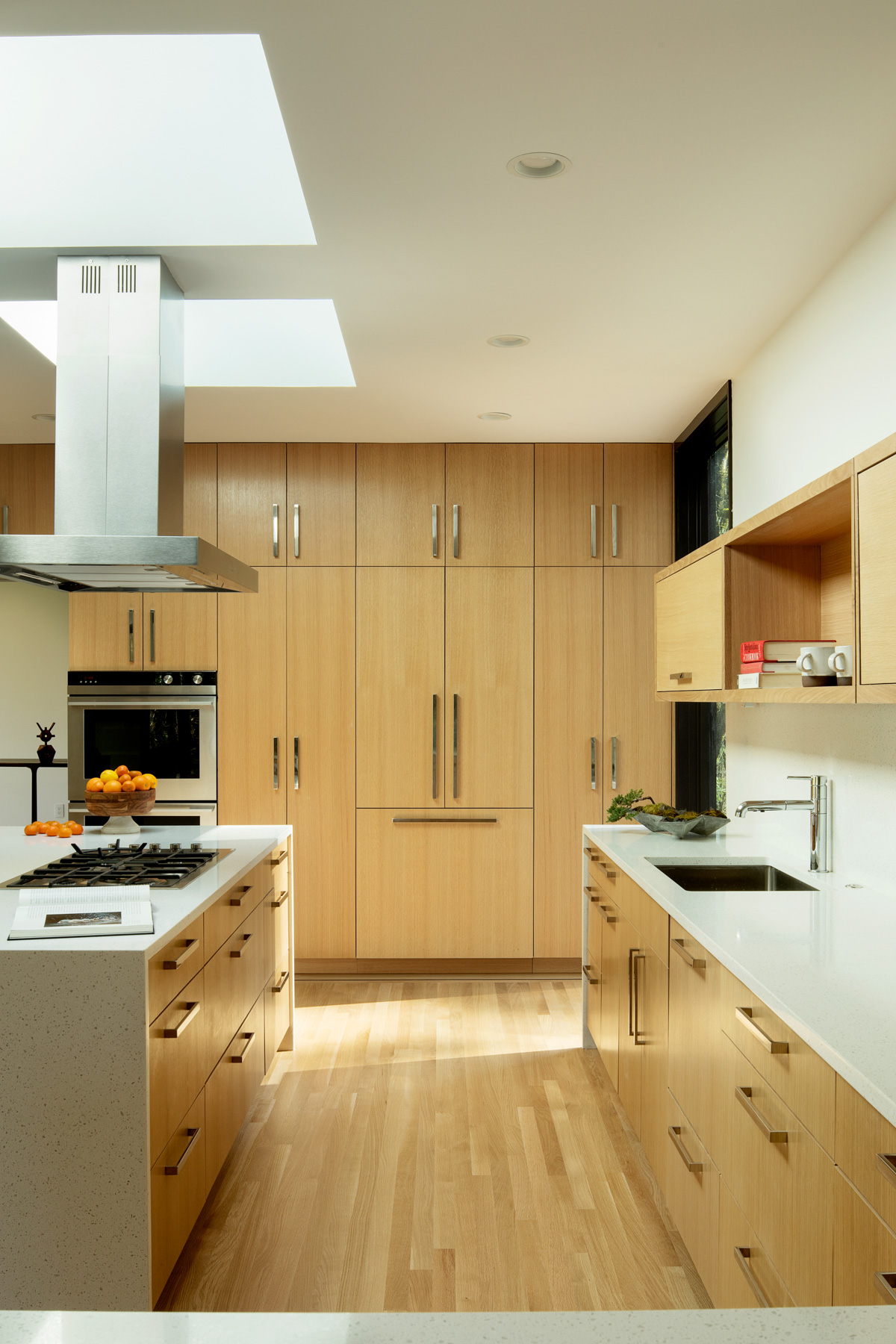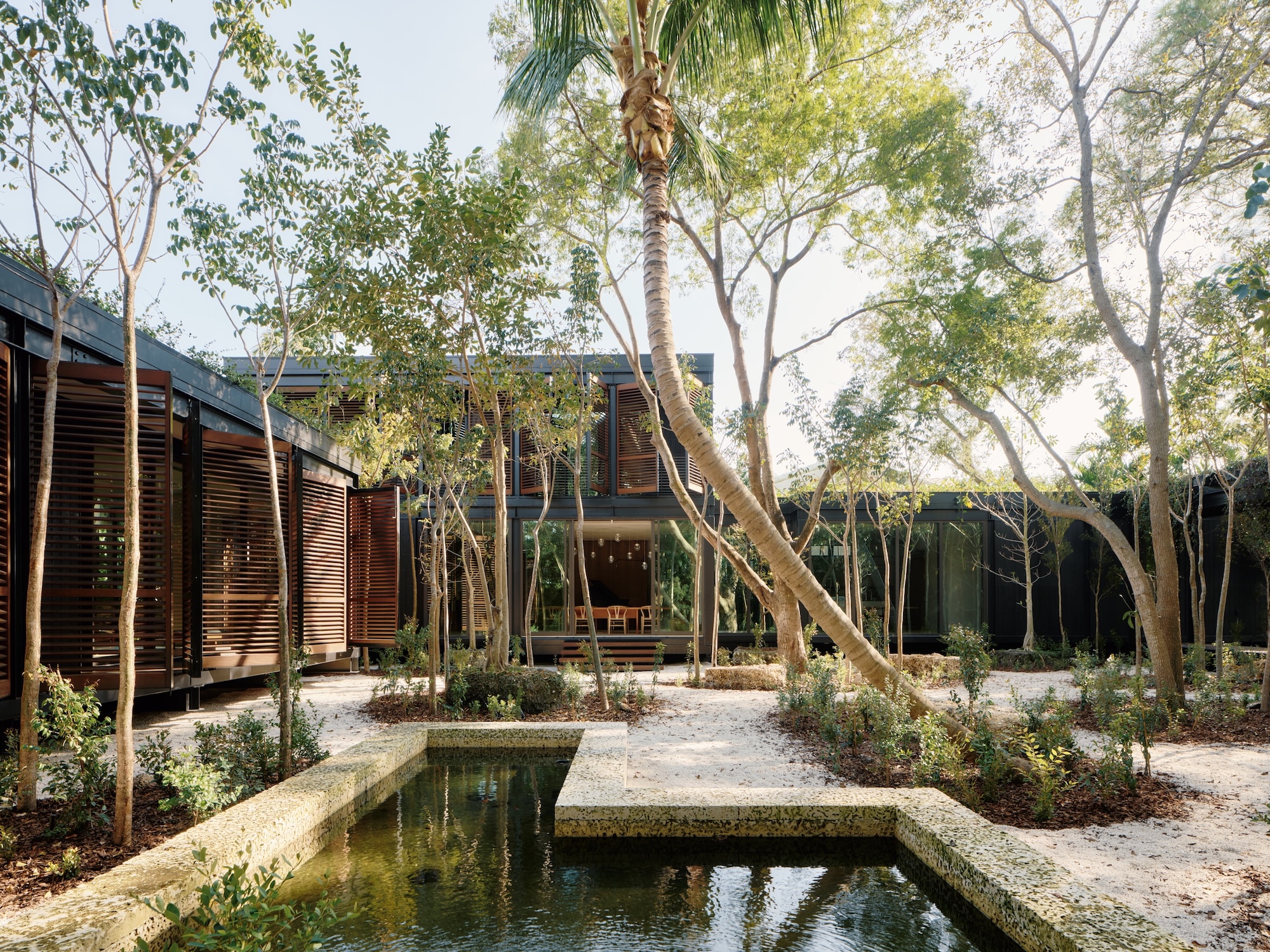Oregon’s Royal Residence is a home among the trees
Perched on a steep slope in Oregon's tree-filled Forest Park, the Royal Residence by William / Kaven is the first in a series of inspiring, contemporary homes in a forward-thinking development by Kaven + Co, architect Daniel Kaven's development company

Jeremy Bittermann - Photography
Looming out of the verdant Oregon landscape, the Royal Residence is a cut above the conventional speculative development. ‘Although we're primarily an architecture studio, we occasionally develop our own projects to help us push the boundaries,' says architect Daniel Kaven from his home office in Portland. ‘Being your own client allows you to explore the limits.' As well as co-founding William / Kaven with his brother Trevor William Lewis in New Mexico in 2004, Kaven also runs Kaven + Co, a development company that's dedicated to forward-thinking property projects, mostly focused on their adopted city of Portland. These include apartment buildings and a speculative scheme for a new high-rise approach to Portland's Broadway Corridor.
The Royal Residence is much more down to earth. It's the debut house on a substantial plot of land set within Forest Park, a 5,000-acre sliver of woodland that lines the slopes above US Route 30 as it heads north-west out of the city. The Royal Residence will ultimately be joined by eight more houses, scattered around this secluded site – Kaven expects the project will take several years to complete. As a statement of intent, house number one is quite exceptional, making the most of the spectacular landscape without compromising the architecture or the environment.
‘The whole concept was to live in the trees,' Kaven explains, ‘we wanted you to feel like you could almost reach out and touch the branches.' Three terraces and expansive areas of glass create a sylvan panorama from every room; especially remarkable given the house is located just a few miles from Portland's downtown.

‘To sit in that house and look at that forest is so peaceful. You can basically watch the plants grow,' Kaven says, ‘the walls of glass create your own nature show.' There are strongly defined seasons in the Pacific North West and the blazing autumn and cold winters provide a strong contrast. When it's hot, life can gravitate to the kitchen, with large sliding doors that open up the space to the trees. ‘The kitchen is the nexus of the whole project,' the architect says, ‘it's a beautiful piece of oak cabinetry set right in the middle of the house.' It adjoins a sitting area, with an angular element that is cantilevered out into the forest – ‘as if it were the ‘prow' of the house.' The top floor study doubles up as another bedroom, effectively turning this level into a self-contained apartment within the trees. White oak flooring with dark walnut detailing is used throughout.
Down below there are three main bedrooms and a snug, as well as a couple of terraces. One bedroom and bathroom also overlook the huge storm planter that forms part of the house's concrete retaining walls which anchor the structure it to the slope. ‘The house is designed around an environmental framework,' Kaven explains, ‘for example rainwater comes off the roof into the planter, where it's filtered naturally before draining back into the forest.'
As well as respecting its surroundings, the Royal Residence takes a stealthy approach to design. The entrance level conceals the bulk of the house, which is set on the slope below, and the dark steel and reflections from ribbons of glazing mute the house's presence. It's located just 500 feet from the Wildwood Trail, one of the most famous of the 70 miles of paths that run up and down the park's steep slopes. ‘The house is more about looking out and being a bit invisible to onlookers – it's designed to be reflective,' says Kaven.

The house is furnished with stock supplied by local Portland company The Good Mod, a workshop and dealership that sources and restores classic items of furniture and creates new custom pieces with a strong Mid-Century aesthetic. Artwork includes geometric wooden pieces by the sculptor Aleph Geddis, referencing the world outside the windows and the strong forms of the vintage and modern furniture.
Kaven describes his involvement in speculative design as a ‘good recipe for positive development. Having people that care about design is very good for everyone.' The house in Forest Park might be more out of sight, out of mind than a conventional development, but it's given the studio free reign to explore the most dramatic design.
‘We've established an aesthetic [with this house] that'll come through the whole development,' the architect says, explaining that the houses won't all follow exactly the same approach. ‘Maybe we'll experiment with building ‘tree houses' up amongst the trunks.' Like many architects, Kaven believes that the period of isolation and lockdown will have an impact on future designs. ‘I think people are re-evaluating what they want from their home,' he muses, ‘there will be a really strong social focus on the single-family house.' The Royal Residence is a fine model to follow.







INFORMATION
Receive our daily digest of inspiration, escapism and design stories from around the world direct to your inbox.
Jonathan Bell has written for Wallpaper* magazine since 1999, covering everything from architecture and transport design to books, tech and graphic design. He is now the magazine’s Transport and Technology Editor. Jonathan has written and edited 15 books, including Concept Car Design, 21st Century House, and The New Modern House. He is also the host of Wallpaper’s first podcast.
-
 In addition to brutalist buildings, Alison Smithson designed some of the most festive Christmas cards we've seen
In addition to brutalist buildings, Alison Smithson designed some of the most festive Christmas cards we've seenThe architect’s collection of season’s greetings is on show at the Roca London Gallery, just in time for the holidays
-
 Six beautiful books to gift the watch and jewellery lover
Six beautiful books to gift the watch and jewellery loverFrom an encyclopaedic love letter to watchmaking to a celebration of contemporary jewellery, these tomes are true gems
-
 Inspired by a pebble, the stylish new Alma charger provides pocketable convenience
Inspired by a pebble, the stylish new Alma charger provides pocketable convenienceWhat if technology could quietly allay anxiety and not cause it? That’s the pitch behind new luxury accessories company Addition, starting with its new Alma wireless charger
-
 Remembering Robert A.M. Stern, an architect who discovered possibility in the past
Remembering Robert A.M. Stern, an architect who discovered possibility in the pastIt's easy to dismiss the late architect as a traditionalist. But Stern was, in fact, a design rebel whose buildings were as distinctly grand and buttoned-up as his chalk-striped suits
-
 Own an early John Lautner, perched in LA’s Echo Park hills
Own an early John Lautner, perched in LA’s Echo Park hillsThe restored and updated Jules Salkin Residence by John Lautner is a unique piece of Californian design heritage, an early private house by the Frank Lloyd Wright acolyte that points to his future iconic status
-
 The Stahl House – an icon of mid-century modernism – is for sale in Los Angeles
The Stahl House – an icon of mid-century modernism – is for sale in Los AngelesAfter 65 years in the hands of the same family, the home, also known as Case Study House #22, has been listed for $25 million
-
 Houston's Ismaili Centre is the most dazzling new building in America. Here's a look inside
Houston's Ismaili Centre is the most dazzling new building in America. Here's a look insideLondon-based architect Farshid Moussavi designed a new building open to all – and in the process, has created a gleaming new monument
-
 Frank Lloyd Wright’s Fountainhead will be opened to the public for the first time
Frank Lloyd Wright’s Fountainhead will be opened to the public for the first timeThe home, a defining example of the architect’s vision for American design, has been acquired by the Mississippi Museum of Art, which will open it to the public, giving visitors the chance to experience Frank Lloyd Wright’s genius firsthand
-
 Clad in terracotta, these new Williamsburg homes blend loft living and an organic feel
Clad in terracotta, these new Williamsburg homes blend loft living and an organic feelThe Williamsburg homes inside 103 Grand Street, designed by Brooklyn-based architects Of Possible, bring together elegant interiors and dramatic outdoor space in a slick, stacked volume
-
 This ethereal Miami residence sprouted out of a wild, jungle-like garden
This ethereal Miami residence sprouted out of a wild, jungle-like gardenA Miami couple tapped local firm Brillhart Architecture to design them a house that merged Florida vernacular, Paul Rudolph and 'too many plants to count’
-
 Tour Cano House, a Los Angeles home like no other, full of colour and quirk
Tour Cano House, a Los Angeles home like no other, full of colour and quirkCano House is a case study for tranquil city living, cantilevering cleverly over a steep site in LA’s Mount Washington and fusing California modernism with contemporary flair